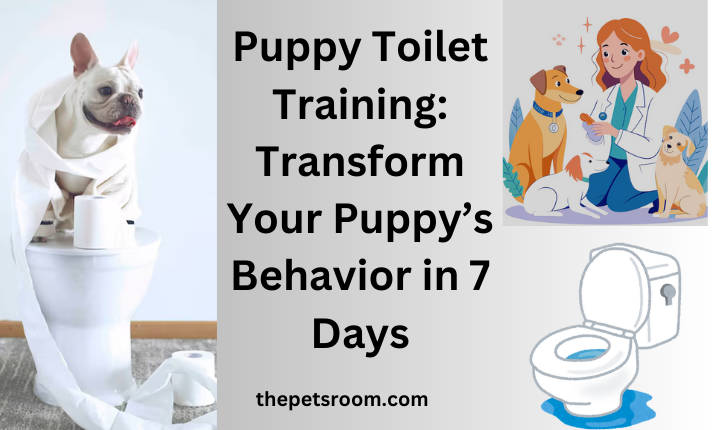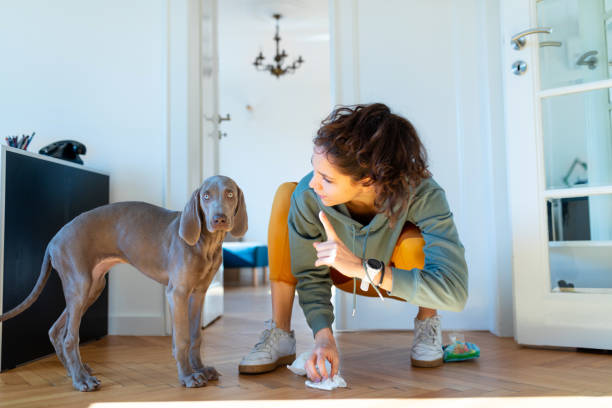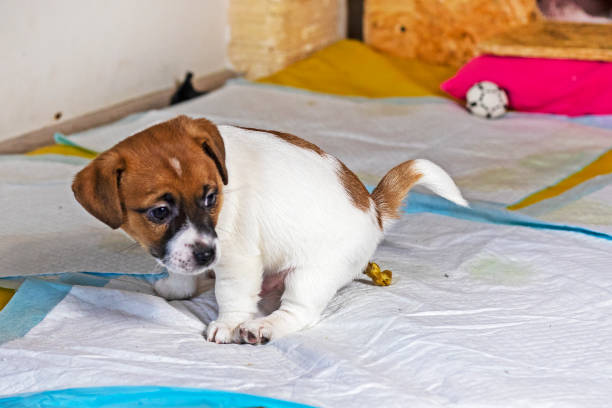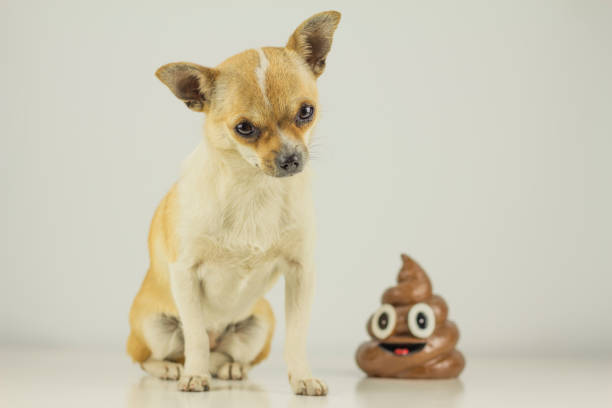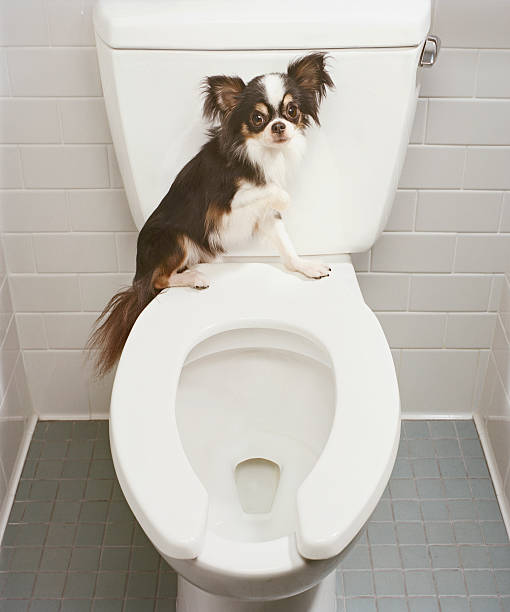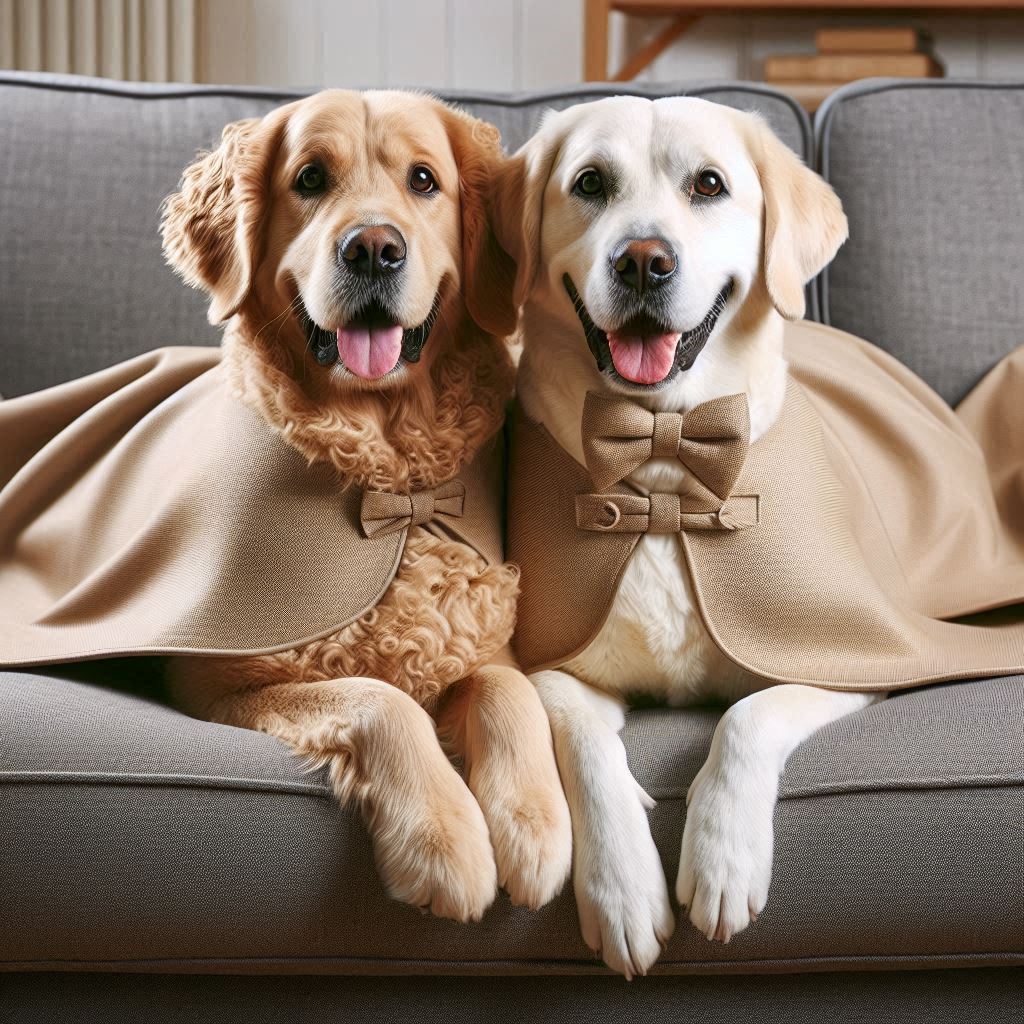Puppy Toilet training made simple! Learn the excellent 7-day approach to training your puppy to use the toilet by providing tips for handling the process of regression, with training sprays, and more for a hassle-free experience. Training a puppy to use the toilet is among the most challenging but rewarding experiences for pet owners. It requires perseverance, persistence and the right equipment to warrant the success.
Although the idea of getting a puppy toilet trained in just 7 days might seem daunting however, it’s possible by following a structured strategy. This guide will guide you through every stage of the process by addressing the most common problems like recalls in toilet training for puppies and the use of efficient tools like your puppy’s toilet training spray and Crate paper. If you’re a new puppy parent or an experienced petowner, this thorough guide can benefit the both of you to pup learn the art of toilet training in just a week.
How to toilet train a puppy in 7 days
Day 1: Establish a Routine
The basis of success in the toilet-training process for puppies is to establish a consistent routine. Puppy’s thrive on the structure of a routine, and it assists them in determining what and when they need to take a bathroom.
Morning Schedule
Begin your day by bringing your puppy out to the designated spot for potty training. Puppy bladders are small and must go to the bathroom immediately when they wake up. Pick a designated space for bathroom breaks and adhere to it. This helps your puppy identify the location with the bathroom requirements of their pet.
After Meals and Playtime
Following eating and playing Take your puppy out immediately following meals or playtimes. Most puppies need to use the bathroom when they eat or play, so this an important opportunity to reinforce their bathroom routine.
Before Bedtime
Be sure to go out with your dog for a final time prior to it goes to bed. This will reduce the chance of accidents happening during the night and can help strengthen their routine.
Day 2: Positive Reinforcement and Puppy Toilet Training Spray
Positive Reinforcement
Positive reinforcement is an effective method for toilet training for puppies. Each time your puppy is successful in going for a bathroom in the outside area, give them immediate praise and treats. The positive reinforcement encourages your puppy to repeat the action.
Puppy Toilet Training Spray
Utilizing sprays for spray for toilet training in your puppy will further strengthen the potty-training area. Sprays that mimic the scent of urine, which naturally draws pups to their designated area. Spray the spray on the desired spot then your pup will realize that this is the place they must go.
Handling Accidents
Accidents are a common element in dog toileting. If they happen you must clean up the mess immediately using an enzyme-based cleaner to get rid of smells. Avoid together ammonia-based cleaning products, since they may lure pups back into the exact spot. Don’t be harsh with your dog for accidents. Instead gently take them outside and encourage them to follow the right behavior.
Day 3: Managing Puppy Toilet Training Regression
Toilet training regression in puppies happens when a puppy improving suddenly experiences more accidents. It could be due to shifts in the routine or stress or even the growth spurts.
Regression and its Treatment
If you observe indications of regression, don’t be afraid to panic. Get back to the basic routine by increasing frequency of toilet breaks and with sprays for puppy spray to train their toilets more frequently and encouraging positive behaviour. If the regression continues, puppy toilet training classes could be beneficial. These classes offer a skillful’s assistance and benefit determine the specific causes of the regression.
Day 4: Incorporating Crate Paper and an Outdoor Dog Poop Container
Using Crate Paper
Crate-training is an effective method to toilet training puppies and Crate paper is an effective aid for this purpose. Crate papers is abrasive and simple to replace, which makes it perfect for preventing accidents in the cage. Cover the bottom of the crate for your dog with this paper, and then change it often to ensure the cleanliness of the crate.
Outdoor Dog Poop Container
As your dog grows more regular with outdoor toilet breaks, you’ll require an easy method to dispose of the waste. A outdoor dog toilet is a great solution. They’re designed to hold dog waste in a secure manner and free of odor until you can dispose of it in a proper manner. Place the container close to the area where your dog is potty trained to make it easy for you to access.
Day 5: How to Train a Dog to Pee Outside
Consistency is Crucial
At the end of day 5 by day five, your puppy should be comfortable having a bathroom break in the outdoors. Be consistent in making them go to the same place at the same time each day. Consistency is essential to reinforce this habit.
Expanding the Training Area
When your puppy is consistently with their designated spot for toileting then you can extend the space they’re permitted to utilize. Allow them to gradually explore more of your yard while returning them to the place they first used for their bathroom breaks. This method helps to reinforce the habit, while also giving them more flexibility.
Handling Setbacks
If your dog has an issue and they pee inside be calm and tidy your mess. Repetition the same routine and be aware that setbacks are an regular element in learning. learning process.
Day 6: Advanced Techniques – Puppy Toilet Training Classes and Dog Gates for Outside
Puppy Toilet Training Classes
If you are having difficulties in toilet training for your puppy Consider taking part in puppies toilet-training classes. The classes are taught by competent trainers who are able to bring specific advice and assistance. They’re particularly beneficial when your puppy is experiencing problems with toilet training or you’re dealing with particular difficulties.
Using Dog Gates for Outside
Dog gates for the outside are useful devices during the puppy’s toilet training. When you’ve got a huge area of your yard, or an area where you do not want your puppy to explore, consider using gates for dogs for creating a controlled area. This will keep your puppy’s focus on the designated area for potty training and stops your puppy from wandering away.
Day 7: Ensuring Long-Term Success
Reinforcing Positive Behavior
At the close of the week the puppy will have good grasp of their toilet routine. Reward positive behavior by giving treats and praise. When your puppy is more steady and consistent, you can gradually decrease the amount of rewards you give.
Preventing Future Accidents
However, even after your pup has been well-trained, it’s important to be on top of things. Puppy’s can still be at risk of accidents particularly in the event that their routine changes and they’re under stress. If accidents happen, return to the basics and strengthen the lessons.
FAQS
How many times puppy should poop a day?
A puppy is expected to poop about 3-5 times per day, depending on their size, age and diet. If your puppy’s poop is much more frequently or less often than that, it might be beneficial to talk with your veterinarian to assure they’re in good health.
How to Punish Dogs for Pooping in the House?
It’s crucial to recognize the fact that punishment is not a successful method of the training of toilets. The punishment of a dog for pooping inside the house could cause confusion and anxiety, which could exacerbate the issue. Instead, you should focus upon the positive effects of reinforcement and regular training. If you spot your puppy doing something wrong be calm and let them go out to their designated toilet location. Encourage them to finish outside and tidy up any mess in the indoor area without attracting their attention.
How long does it take to toilet train a puppy?
Typically, puppy toilet training could take anywhere between a few weeks and several months, based on the puppy’s breed, age, and the consistency of the training. But, with a well-planned method, you can dramatically speed up the process, possibly experiencing payoff within 7 days.
How can I speed up the toilet training process?
Consistency is key. Follow a consistent eating and toilet training schedule Use the spray for training your puppy to mark areas for potty training and provide immediate praise and rewards whenever your puppy is outside. Crate training may also benefit to speed up the process of teaching your puppy how to control their bladder.
How many times should a puppy poop a day?
On average, a puppy should be pooping 3 to 5 times per day, according to their age, diet and level of activity. If your puppy’s poop is much more frequently or less often than usual, it might be worthwhile to consult your vet.
Conclusion
In the end, puppy toilet training is a long-term process that takes patience, perseverance and the right method. When you adhere to a well-planned plan that includes a 7-day method described in this article to benefit you ensure your puppy’s long-term success. Be aware to use positive reinforcement using tools such as the spray for toilet training and Crate paper and remaining attentive even after the initial learning phase are crucial in ensuring that your puppy is able to master their toilet habits.
Resolving setbacks in a calm manner and encouraging the behavior that you wish to see benefit strengthen the training. While you assist your dog through this procedure, you must keep in mind that each puppy is unique, and some may require some time to comprehend the idea. Keep the same routine in place and don’t be afraid look for more help from classes for puppy toilet training should you require it. With a commitment and positive attitude, you’ll eventually have a healthy, well-trained and secure home.






